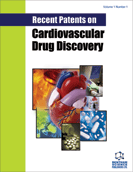Abstract
Abdominal aortic aneurysm (AAA) is a very significant health problem in the United States. Current therapeutic options are surgery or endovascular stenting. Medical treatment is not very effective and there is no medical therapy that can effect the regression of AAA. Surgical or endovascular intervention for many older patients will be unnecessary if medications could prevent or reduce the progression rate of small AAA by 50%. Basic research has helped to determine the molecular basis of pathogenesis in AAA. Mediators of aortic damage include angiotensin II, leukotriene- LT4, prostaglandin- PGE2, interleukins, tumor necrosis factor, tissue plasminogen activator, c-Jun N-terminal Kinase, NF-κB, Rho kinases, osteoprotegerin and chymases. They work in concert to activate matrix metalloproteinase, serine proteases and cysteine proteases. The result is degradation of aortic wall proteins, extracellular matrix and apoptosis of vascular smooth muscle cells. An enhanced understanding of the pathogenetic pathways has led to significant research and development of new molecules, which can inhibit these pathways and delay the expansion of AAA. We discuss newly patented agents that may have a beneficial role in preventing the progression of AAA.
Keywords: Angiotensin II, matrix metalloproteinases, elastin, collagen, dipeptidyl peptidase I, prostaglandin E2, 5-lipoxygenase pathway, cycloxygenase, chymases, cathepsins
 8
8


